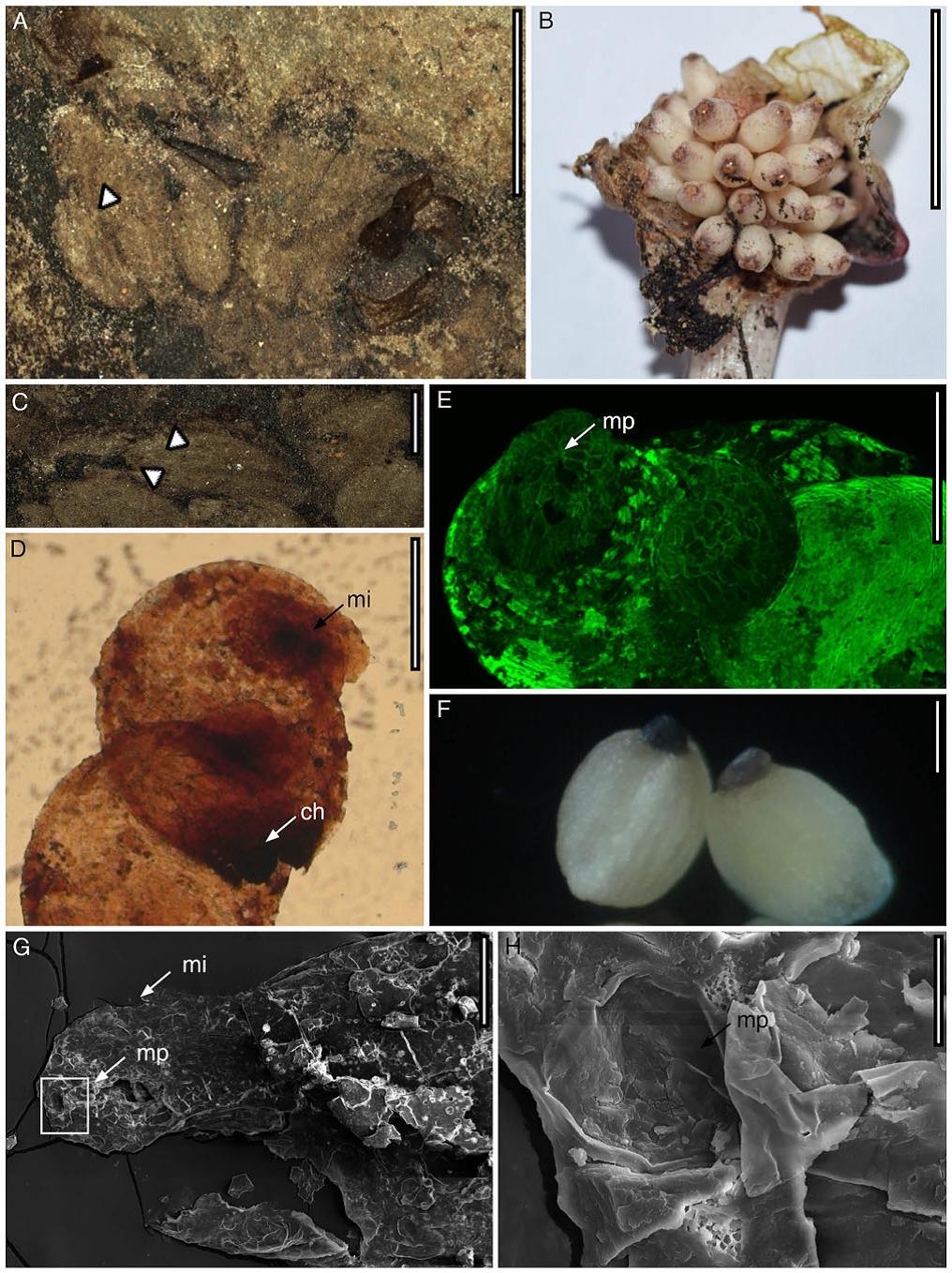The extinct genus Limnobiophyllum (Araceae) has been considered a tentative link between the Aroideae and Lemnoideae subfamilies of Araceae. General understanding of morphological character evolution among these subfamilies has been limited due to the lack of preserved key structures in fossils such as infructescences.
In a study published in Journal of Systematic Palaeontology, researchers from Xishuangbanna Tropical Botanical Garden (XTBG) reported fossils of well-preserved free-floating Limnobiophyllum leaves coupled with an infructescence from the middle–upper part of the Dingqing Formation from the late Oligocene of the central Tibetan Plateau.
The fossils included an attached fertile infructescence with seeds, which have not previously been confirmed for this genus. The infructescence was oblate spheroidal saucerlike and densely packed with the seeds freely attached to the spadix.
After having morphological studies and phylogenetic analysis, XTBG researchers classified those fossils as a new species and named it as Limnobiophyllum pedunculatum to refer to its infructescence with a long and visible peduncle.
“It represents the first convincing Limnobiophyllum fossil from the Tibetan Plateau and the first well-documented occurrence from east Asia”, said Prof. XING Yaowu, principal investigator of the study.
“As these specimens were dated to the late Oligocene, it indicates a rather warm, humid palaeoenvironment on the central Tibetan Plateau during that period, compared to the current dry highland condition,” said XING Yaowu.
Contact
XING Yaowu Ph.D Principal Investigator
Key Laboratory of Tropical Forest Ecology, Xishuangbanna Tropical Botanical Garden, Chinese Academy of Sciences, Mengla, Yunnan 666303, China
E-mail: ywxing@xtbg.org.cn

Leaf morphology of Limnobiophyllum pedunculatum. (Image by Shook Ling Low)

